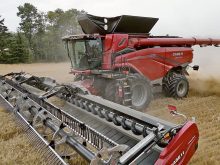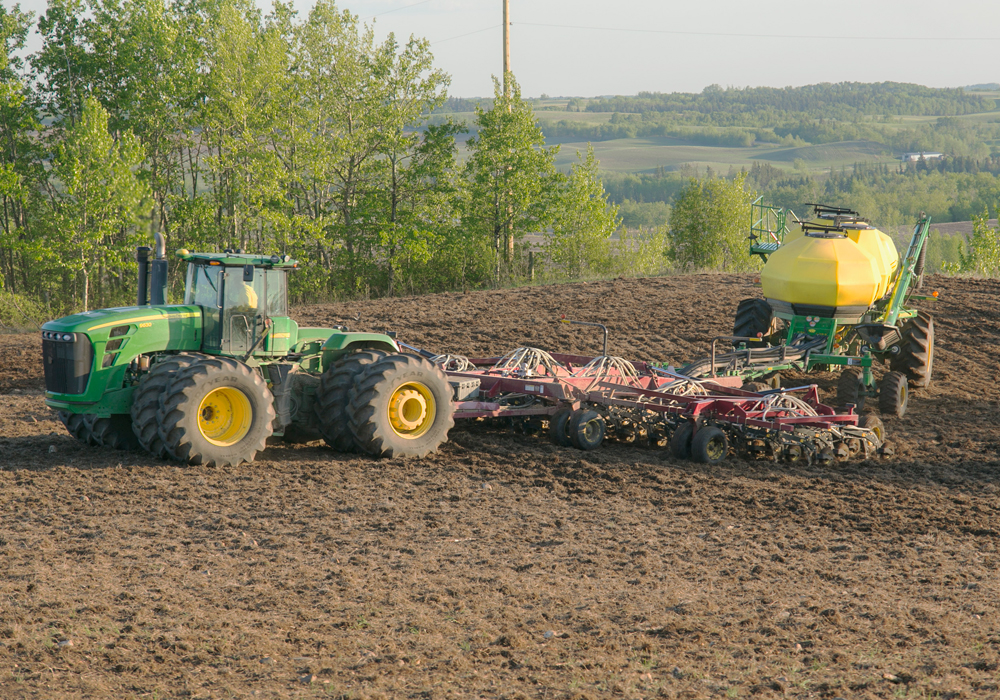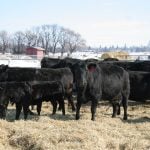The Canadian Wheat Board has further lowered its projections for this year’s wheat crop, due to cool temperatures and drought across a large chunk of the Prairies.
During its end of the crop year review July 30 in Winnipeg, Ian White, the CWB’s chief executive officer, forecast that western Canadian farmers would produce 20.2 million tonnes of all types of wheat in the 2009-10 crop year, down 21 percent from the 25.5 million tonnes in the 2008-09 crop year.
“The reason for the downgrade of the crop this year is the weather,” White said, while pointing to a temperature map of Western Canada, coloured dark blue and light blue to illustrate the cool weather on the Prairies this summer. (See map, page 7)
Read Also

VIDEO: Agritechnica Day 4: Robots and more robots, Nexat loves Canada and the trouble with tariffs
Agritechnica Day 4: Robots and more robots, Nexat loves Canada and the trouble with tariffs.
“Given the conditions, the estimates are quite reasonable,” said White, referring to a different map showing how a large part of Saskatchewan and most of the growing regions in Alberta have received 50 percent of normal precipitation in June and July.
Specifically, the CWB expects farmers to produce 16 million tonnes of wheat, 4.2 million tonnes of durum and 8.6 million tonnes of barley this year.
In 2008-09, they produced 20 million tonnes of wheat, 5.5 million tonnes of durum and 11.2 million tonnes of barley.
More feed wheat
Along with the lower volume, the quality of the wheat crop is also a concern this year.
Bruce Burnett, CWB director of weather and crop surveillance, said in a typical year eight to 10 percent of harvested wheat is feed quality.
This year he expects that to rise by five percentage points, meaning 13 to 15 percent of the crop could be feed wheat.
“Most of the feed wheat we do have produced on the Prairies is due to adverse harvesting conditions, rather than frost,” said Burnett. “Frost is a rather special event (and) could increase that number quite dramatically.”
Consequently, there is a possibility that farmers who get high quality, high protein wheat in their bin may get a higher price for their product.
“We could see some forms of premium for higher quality (wheat),” said White, depending on the wheat crop in other parts of the world.
Although the outlook for the 2009 harvest is guarded, the 2008-09 crop year was an excellent year for western Canadian farmers, said Larry Hill, CWB board chair.
“I think we can look back on the year with pride,” he said, at a news conference in Winnipeg.
White said the CWB exported 18.5 million tonnes of wheat, durum and barley in the last crop year, the largest volume since the 1999-2000 crop year.
The volumes were slightly higher than the 17.4 million tonnes shipped in 2007-08. However, CWB revenue returned to farmers dropped to slightly more than $6 billion (estimated) from $7.2 billion in 2007-08, because of lower commodity prices.
Iran was the biggest buyer of Canadian wheat at 1.8 million tonnes in 2008-09, as drought severely cut Iranian farmers production last year. Saudi Arabia was also a primary customer, taking 805,000 tonnes of CWB wheat.
“We expect it to be quite a good market in the future,” White said, noting Saudi Arabia’s decision to end its wheat self-sufficiency program, because the crop was using too much of the country’s limited water resources.
White also noted that Canadian farmers have benefited from deregulation of the wheat trade in Australia. The single desk of the Australian Wheat Board ended in June 2008, which has resulted in marketing uncertainty.
“The Australian exporters have had significant difficulty actually getting their crop out of the country… (and) some of the customers were concerned about the ability to get year round supply,” said White.
“So, in countries like Indonesia, for instance, we have certainly benefited from that. And I think we have also benefited in the Middle East.”















